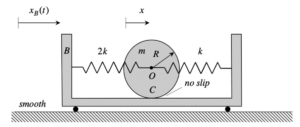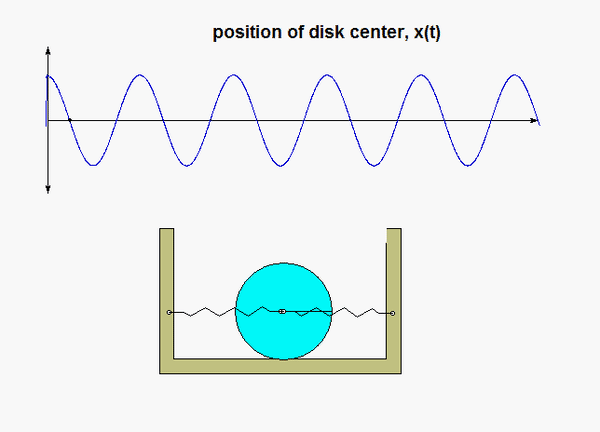
Any questions?

Discussion: The above is an animation of the particular solution for this problem using a frequency of excitation that is different from that given in the problem statement. For this frequency, is this excitation frequency greater or less than the natural frequency?
Deriving the EOM: the four-step plan
- FBD: Since the motion of the cart is prescribed in time, we need to focus on the analysis of the disk. Draw a free body diagram of the disk. Be reminded that there will be a friction force on the disk at the contact point C that needs to be included in the FBD.
- Newton-Euler equations: Note that the no-slip point C on the disk has both vertical and horizontal components of acceleration. Because of this, you CANNOT use sum(M_C) = I_C*theta_ddot, where theta is the angle of rotation for the disk. You are recommended to use both the summation of forces in the x-direction, and the moment equation about point O. Using these two equations together, you can eliminate the friction force from the dynamical equations.
- Kinematics: Put some careful thought into this. Note that C is NOT the IC for the disk. As a result the angular speed of the disk is not proportional to x_dot, rather it is proportional to the difference between x_dot and x_B_dot.
- EOM: Combine your kinematics equations with the equations from Step 2 to arrive at the single differential EOM for the system.